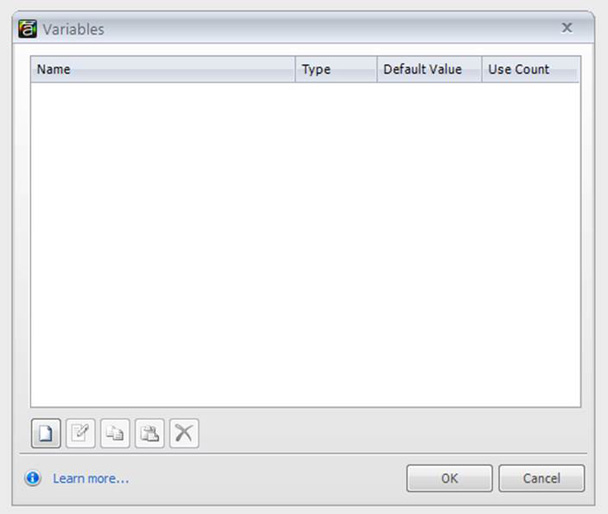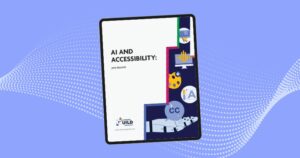Your cart is currently empty!

“What We Got Here Is … an EPSS”

In Donn Pearce’s book Cool Hand Luke, each time the captain of Road Prison 36 recapturesLuke he says to him, “What we gothere is … a failure to communicate.” And thisjust may well be the case now with our conversations around performance support(PS) and its range of incarnations.
To begin, here are three critical clarifications:
- There are different types of vehicles fordelivering performance support
- These vehicles differ in capability and qualityof production
- As a result, they vary in their capacity todeliver business benefit
What’s the difference?
Take, for example, job aids and traditional software helpsystems. These two types of PS vehicles certainly differ in what they can andcan’t do. And, depending upon the methodology employed in developing them, theirfull capabilities may or may not be realized. According to PS pioneer GloriaGery, the performance support vehicle with the greatest potential businessbenefit is an EPSS (electronic performance support system). Take a look at hercomparisons in Tables 1 and 2.
Table 1: Electronic performance support systems compared to jobaids (Gery)
Electronic Performance Support Systems | Job Aids |
Can support simple or complex task performance, can address multi-pathed, conditionally branched, integrated processes via expert systems. | Typically support simple, linear sequential procedural tasks. |
Can accept user input or data as a basis for situationally specific branching, advice, information presentation, etc. | Do not accept user input or data. Structuring occurs in advance of need and addresses limited situations. |
Provide task structuring, advice, and related information. | Provide task structuring but not related information. |
Can present customized views of the system to individual users. | Are structured in advanced and do not accommodate individual user requirements. |
Can incorporate multiple modes of information presentation (e.g., text, audio, images, animated sequences). | Are typically paper-based with possibility of passive multiple modes (i.e., text and still images). When electronic, could incorporate multiple modes, but is mostly text and still images. |
Can provide alternate access to the information (e.g., menus, alphabetical listings, context-sensitive to software or condition, hierarchical access through outlines, or relational access through hypermedia). | Typically provide pre-determined and structured access. Because the InfoBase is not integrated, the path is usually linear. |
Table 2:Electronic performance support systems compared to traditional help systems(Gery)
Electronic Performance Support Systems | Traditional Help Systems |
Support a broad range of tasks, whether or not software is involved. | Typically support only software-related tasks and are usually confined to software rather than job-task support. |
Provide information, task structuring, interactive, conditionally branched advice, examples, and interactive training. | Provide passive information only. |
Provide internally cross-referenced information or knowledge that also links to other structures. | May or may not be internally cross referenced. They are typically context sensitive to software applications and not linked to other resources. |
Can support complex, interrelated tasks with conditional branching. | Usually provide limited descriptions of procedures and, sometimes, examples. They rarely deal in combined procedures of complex tasks. |
Provide multiple means of access and alternative views of the content. | Are typically accessed via structured menus (listing topics, alphabetical listings, commands, and so forth). |
May accept user input or data. | Do not accept user input or data except as menu choices. |
Can contain customized views of the information or support. | Could contain customized views of the information, but rarely do. |
Defining the EPSS
In all her groundbreaking work, Gery settled in on an EPSS as theembodiment of what she proposes performance support can, and needs to be, fororganizations. She set aside other PS renditions, such as job aids andtraditional help, because, although they provide performance support (at some level),they don’t provide all the technology-enabled services she determined a fullyloaded performance support solution needs to provide.
Gery describes an EPSS as:
“An orchestrated set of technology-enabledservices that provide on-demandaccess to integrated information,guidance, advice, assistance, training, and tools to enable high-level job performance with a minimum of support from other people.”
If we are to honor the magnificent workthat Gery has done, we need to make sure there’s no failure to communicatehere. We need to unpack this definition and make sure we understand each part clearly;we also need to determine how an EPSS differs from all other kinds ofperformance support vehicles.
Here’s a start:
- Technology-enabled services: Thekind of performance support that will systematically enable high-levelperformance requires software to author, enable, and maintain it. In the above comparisontables, Gery describes EPSS functionality that cannot be achieved withouttechnology.
On-demand access: Today people work while on the move. Regardless ofwhere they are physically, they need on-demand access to performance support. Itneeds to be instantly accessible no matter where aperformer is within software, in the workflow, or on the road.
Performers are impatient when theystand at the threshold of the moment of apply;if they have to go searching, they won’t take the time to do it. This continuesto hold true after physically accessing an EPSS. There neither the time nordisposition to scour through endless hits offered up by search engines, wanderthrough websites, or dive down into a learning management system to find, andthen plow through, an eLearning module to get to just the information needed.
Integrated information,guidance, advice, assistance, training, and tools: Today’stechnology must provide two-click and/or 10-second access to just enoughinformation, guidance, advice, assistance, training, and tools that willimmediately get the job done. These resources need to be contextually offeredup through cascading levels of support that address all five moments of need.
Consider the performance-support pyramidin Figure 1. It reveals anintegration strategy that anticipates the evolving information requirements ofa performer. This layered approach is the path for intuitive fingertip accessto the specific resources needed.

Figure 1: Cascading levels of supportIt takes technologyto enable this pyramid. When properly enabled, it facilitates rapid access to just enough of what’s needed. Itreins-in the chaos of resources scattered across SharePoint sites, lockedwithin an LMS, buried deep in a knowledge repository, stored on someone’sdesktop, or hidden in someone’s mind.
- Enable high-level job performance. Thecore mission of the work we do is to enable high-level job performance, and toensure people perform effectively and efficiently at every changing moment oftheir work. Training, alone, can’t and won’t accomplish this. Figure 2 illustratesan important concept in this regard: learning to competency.
 Figure 2: Learning to competency
Figure 2: Learning to competencyThe red portion of Figure 2 represents the formal sideof learning. This shows the reality that whatever a learner begins to masterduring a learning event (whether instructor-led or eLearning) enters a rapiddeath spiral once the event ends. This creates a serious challenge to learnersas they move from a formal learning environment into the phase called learningtransfer. As the influence of their learning experience rapidly diminishes,somehow learners must find their way to what Gery describes as “performingeffectively and efficiently” on the job. Navigating these waters successfully requiresan EPSS. Without it, random failure happens. Time to effective performance iscostly and long. And change rapidly dismantles whatever’s left from thelearning experience. It takes an effectively designed EPSS to facilitate theimmediate transfer of what’s learned in the classroom into a sustained patternof effective performance on the job.
- Minimum support from other people. Althoughthere may be times when pulling people away from the work they are doing toprovide support is justifiable, it isan expensive proposition—especially whenit is the default option. An effective EPSS allows for justifiable support fromother people, but will first and foremost enable self-reliant, high-levelperformance. Self-support first is the best option with the possible exceptionfor highly critical, complex skills. You can judge the effectiveness of an EPPSby this standard: its ability to “enable high-level job performance with aminimum of support from other people.”
The next steps in developing performance support
We’re making great progress convincing organizations thatperformance support, properly integrated with training, is what we ought to bedoing. The potential benefits are compelling. But when we get down to actuallycreating a performance support solution, it’s been messy. Ask 10 people tobuild a performance support solution that addresses the same business need andyou’ll get 10 different renditions. There is little chance that each willsupport performance with equal capacity.
This is why we need crystal clear communication regarding thedifferent types of vehicles we are creating in our efforts to provide performancesupport. Most importantly, we need to understand Gery’s vision of what an EPSSis. We need to understand all that an EPSS can do. We need to define a robustmethodology for developing an EPSS that meets all five moments of need. Andjust as we expect there to be software for authoring eLearning courses, we mustembrace the need for software to author, deploy, and maintain an EPSS that willdo all that Gery envisioned an EPSS can do. Only then will we be able toimplement an effective learning and performance support strategy. And, lestthere be any failure to communicate—anEPSS is our best option for delivering ongoing strategic and financial value tothe organizations we serve.
To continue this discussion, learn more, and keep up-to-dateon the topic of performance support, begin by attending the Performance Support Symposium in Boston, September 9& 10, 2013. Then become a part of our community. Click here to join.
Reference
Gery, Gloria J. Electronic Performance Support Systems: How and Why to Remake the Workplace Through the Strategic Application oftechnology. Tolland,MA: Gery Associates, 1991.






